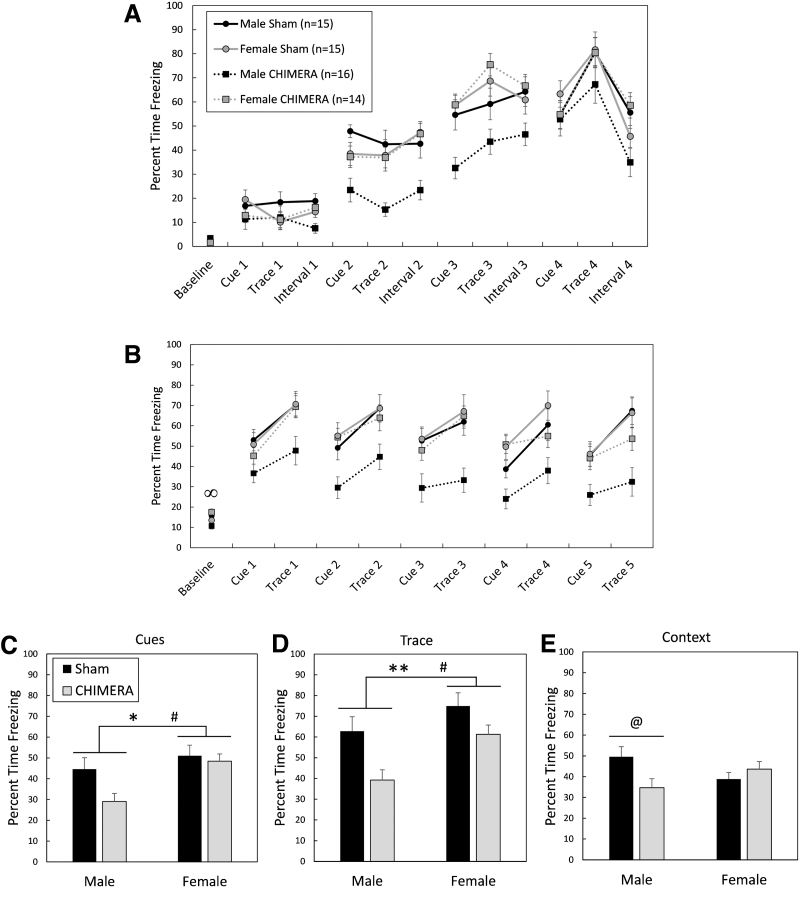FIG. 9.
Trace fear conditioning, 24-26 days following 4X Closed-Head Impact Model of Engineered Rotational Acceleration (CHIMERA) or sham procedures. Legend in (A) applies to (A) and (B); legend in (C) applies to (C), (D), and (E). All mice learned to associate the auditory cue and trace period with a foot-shock (A). During the cue test (B), there was an Injury × Sex interaction effect on the amount of time freezing during the 3-min baseline period, with injured female mice freezing more than injured male mice. The total amount of time freezing during cues (C) and trace periods (D) was affected by both Sex and Injury. Overall, female mice froze more than male mice, and sham-treated mice froze more than injured mice. During the context test (Day 26; E), injury only affected male mice, with injured male mice freezing less than sham-treated male mice. The infinity symbol (∞) in (B) represented an effect of Sex in injured mice only, Female CHIMERA > Male CHIMERA: ∞, p < .05. Asterisks (*) in (C) and (D) indicate an effect of Injury, Sham > CHIMERA: **p < 0.01, *p < 0.05. The pound sign (#) in (C) and (D) represents a main effect of Sex, Female > Male: #p < 0.05. The at symbol (@) in (E) represents an effect of Injury in male mice only, Male Sham > Male CHIMERA: @p < 0.05.

